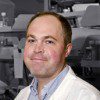
Dr. Michael Taylor
There are usually three main tools for fighting brain cancer: surgery, radiation and chemotherapy. But for patients with ependymoma, a type of childhood brain tumour most common in babies, despite many clinical trials none of the standard chemotherapy medicines have been shown to help. While treatments for many other childhood cancers have changed and improved over the past two decades, chemotherapy for ependymoma has remained stagnant. The underlying cause of the chemo-resistance has baffled doctors until now.
Novel research led by The Hospital for Sick Children (SickKids) is the first to demonstrate a valid reason for why standard chemotherapies don’t work on ependymomas, and has also identified an existing FDA-approved drug that may help these young patients. The study is published in the February 19 online edition of Nature.
To date, all human cancers that have been studied had mutations or errors in the DNA: either something is missing, duplicated or in the wrong spot on the DNA strand. In search of an underlying genetic cause of this chemo resistance, the research team did whole-genome and whole-exome sequencing on 47 ependymoma samples, and what they found was surprising. “There were zero significant mutations. Our findings indicate that ependymoma is the first malignancy for which genome sequencing failed to identify any significant or recurring mutated genes,” says Dr. Michael Taylor, principal investigator of the study and Neurosurgeon and Senior Scientist at SickKids.
The problem, the researchers found, was not that there were errors in the tumour’s DNA code, but that the DNA was improperly packaged, so the cancer cells were behaving like stem cells with the continuous ability to divide. “One could compare DNA to a book, with most cancers having spelling mistakes, missing pages or having chapters in the wrong order. Ependymomas have none of these mistakes but instead the book is written in the wrong font,” explains Taylor. “Most chemotherapies function by promoting damage to DNA, which subsequently induces cancer cells with mutated genomes to self-destruct. Since ependymomas don’t have significant mutations, it explains why chemotherapy has not worked.”
Once the research team knew what the problem was, they could start working on the solution. There were existing drugs that can modify the way DNA is packaged, but the team first needed to grow ependymoma cell lines to test the drugs; something that had not been done before. Using pieces of real patient tumours, Dr. Peter Dirks’ lab figured out how to grow ependymoma cell lines so the team could test whether the drugs would have an effect on the ependymoma cells in the dish. And they did. Dirks is Neurosurgeon and Senior Scientist at SickKids.
“This was the foundational step in making this research something real and potentially meaningful for our patients,” says Taylor, who is also Professor in the Departments of Surgery and Laboratory Medicine and Pathobiology at the University of Toronto, and Garron Family Chair in Childhood Cancer Research at SickKids. The team didn’t stop there: once they discovered that the drugs were effective in the grown cell lines, they took it a step further by testing the drugs on an ependymoma tumour removed from a current patient.
“We were able to go from the OR table back to the lab to test this medicine on a specific patient’s tumour,” says Taylor. Just as in the cell lines, the medicine worked on the tumour and is currently being used to treat this child. “This step towards individualized cancer care is very exciting, and we hope that this can be adapted to other brain tumours as well.”
The researchers explain that these drugs that target the improperly-packaged DNA represent the first strategy for therapy of this currently untreatable disease, and should be considered for testing in clinical trials for children with ependymoma.
Source of text: Hospital for Sick Children
Original Research Article:
Mack SC, Witt H, Piro RM, Gu L, Zuyderduyn S, Stütz AM, Wang X, Gallo M,Garzia L, Zayne K, Zhang X, Ramaswamy V, Jäger N, Jones DT, Sill M, Pugh TJ,Ryzhova M, Wani KM, Shih DJ, Head R, Remke M, Bailey SD, Zichner T, Faria CC,Barszczyk M, Stark S, Seker-Cin H, Hutter S, Johann P, Bender S, Hovestadt V,Tzaridis T, Dubuc AM, Northcott PA, Peacock J, Bertrand KC, Agnihotri S, Cavalli FM, Clarke I, Nethery-Brokx K, Creasy CL, Verma SK, Koster J, Wu X, Yao Y, Milde T, Sin-Chan P, Zuccaro J, Lau L, Pereira S, Castelo-Branco P, Hirst M, Marra MA, Roberts SS, Fults D, Massimi L, Cho YJ, Van Meter T, Grajkowska W, Lach B,Kulozik AE, von Deimling A, Witt O, Scherer SW, Fan X, Muraszko KM, Kool M,Pomeroy SL, Gupta N, Phillips J, Huang A, Tabori U, Hawkins C, Malkin D, Kongkham PN, Weiss WA, Jabado N, Rutka JT, Bouffet E, Korbel JO, Lupien M, Aldape KD,Bader GD, Eils R, Lichter P, Dirks PB, Pfister SM, Korshunov A, Taylor MD.
Epigenomic alterations define lethal CIMP-positive ependymomas of infancy.
Nature. 2014 Feb 19. doi: 10.1038/nature13108. [Epub ahead of print]
View another article about this important study published by the University of Toronto
